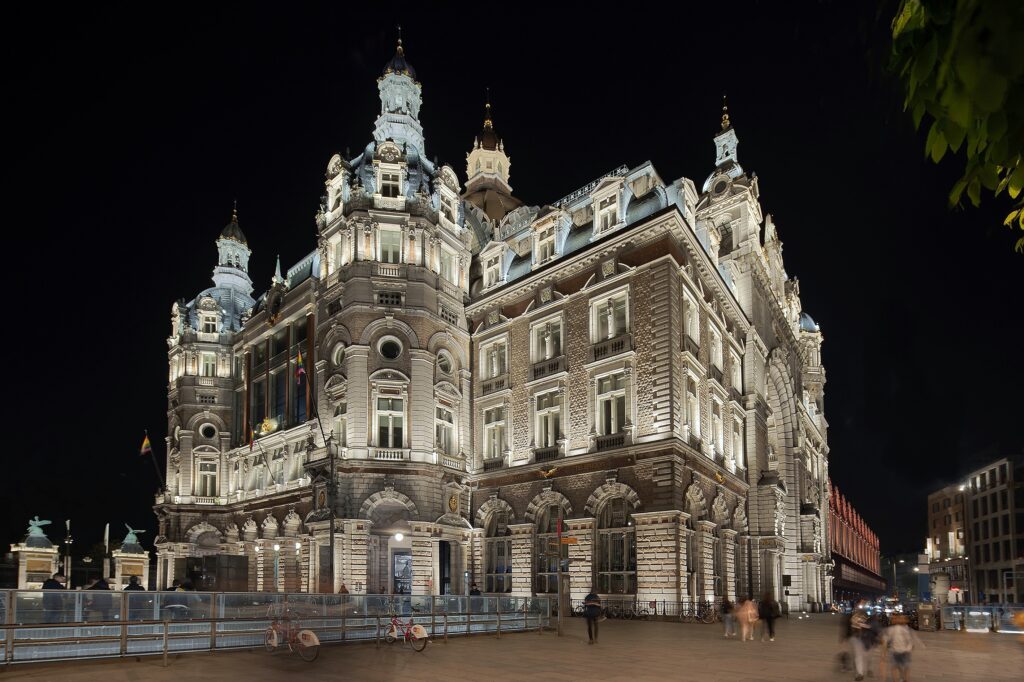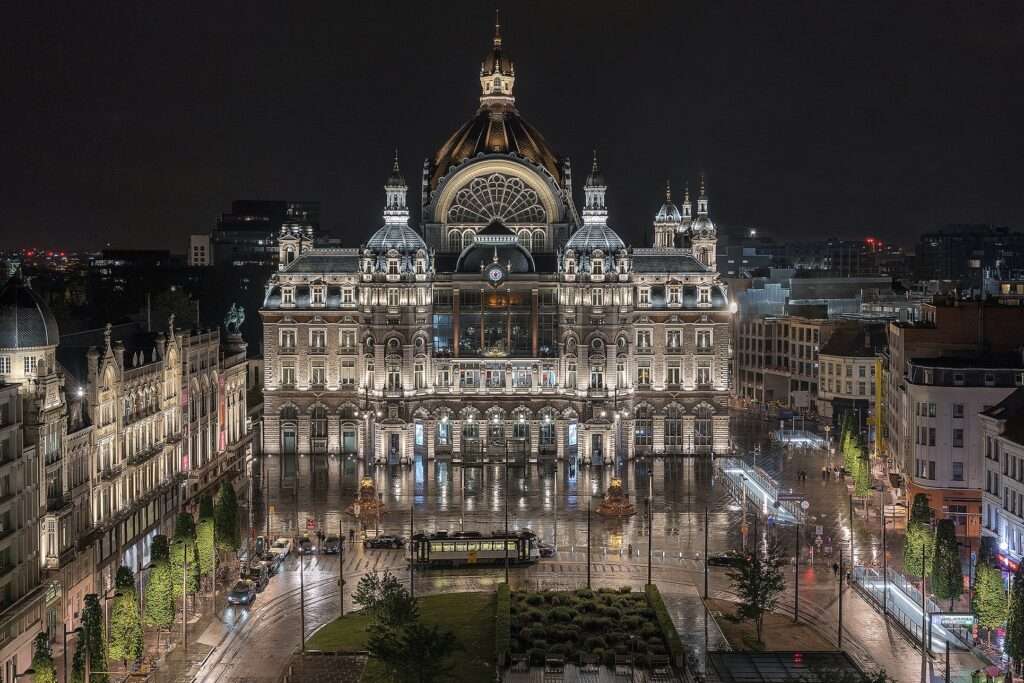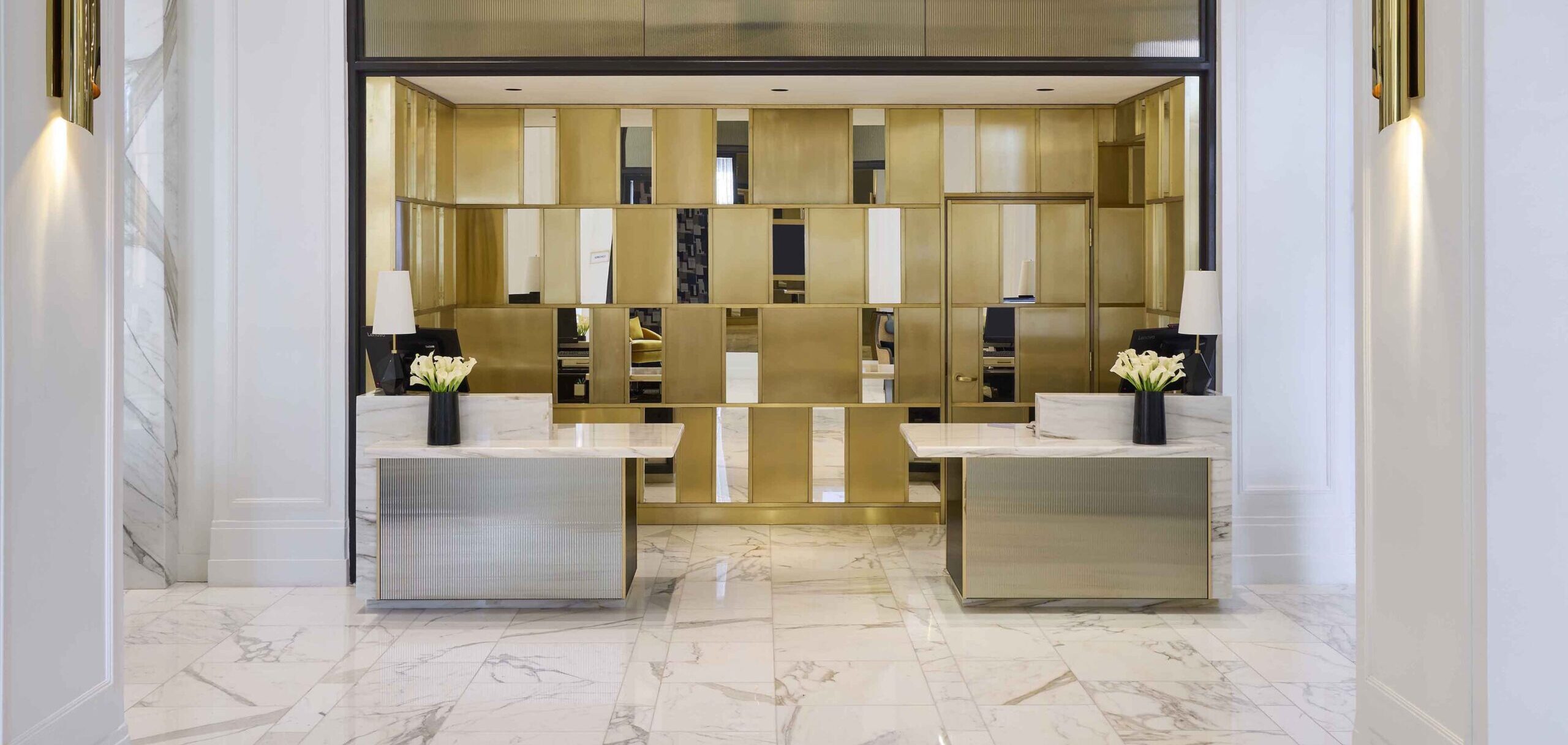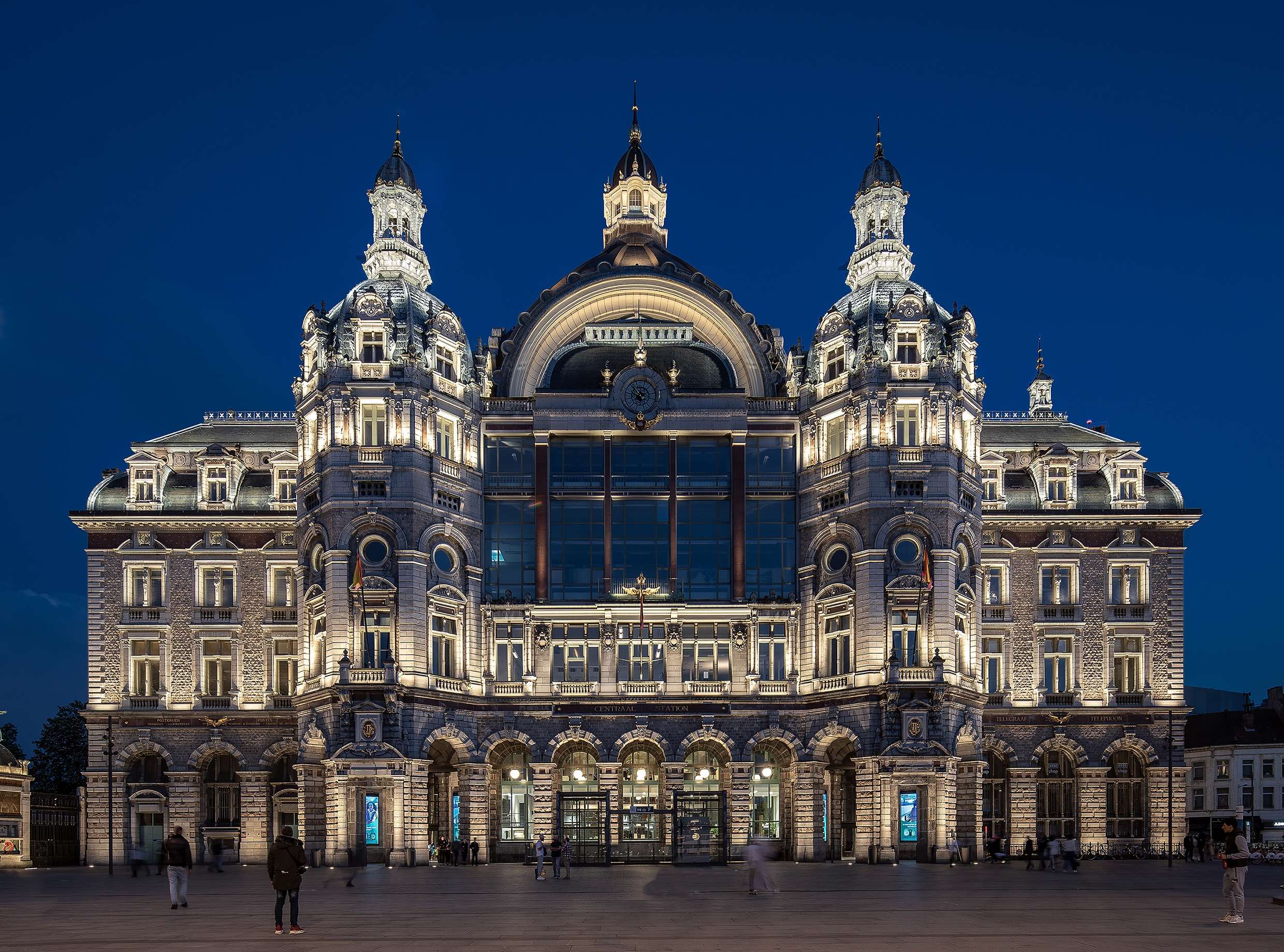In the heart of Antwerp, Belgium, a historic gem awaited a transformation that would transcend time and create a radiant spectacle, giving new life to the iconic central station. Susanna Antico Lighting Design Studio, led by the visionary Susanna Antico herself, spearheaded a team of talented designers, including Samuel Vespo, Gad Giladi, Daniela Lupacchini, Helena Gentili, and Georg Balan, to undertake a monumental task—the illumination of the “Cathedral on Rails,” Antwerp Central Station.

Commissioned by the City of Antwerp, the project aimed to elevate the central station to the title of the “most beautifully illuminated station in the world.” Originally constructed in the early 19th century, the historical significance of the station demanded a design that not only respected its heritage but also breathed new life into its architectural magnificence.
To achieve the city’s ambitious vision within the constraints of time and budget, the design team, after meticulous research and conceptualization, focused on accentuating key architectural elements. The design emphasized the importance of clear visual hierarchy, eliminating noise, and adhering to lighting master plans and international standards. The self-imposed criteria included creating a new nighttime image for the station area, contributing to orientation, fostering a sense of comfort and security, and enhancing the overall appeal for residents and visitors.

Susanna Antico Lighting Design Studio places a strong emphasis on sustainability, aligning with the EU2030 energy efficiency goals. The lighting design achieves 100% power compliance with varying scenic levels, reducing consumption during specific periods. The use of quality and long-lasting luminaires ensures low-level maintenance, with 820 installed luminaires being maintainable by a single technician. The sources, LEDs with high color rendering index (CRI) and consistent color temperature (CCT), boast a life of over 50,000 hours, contributing to the project’s sustainability goals.
The sustainability approach extends to minimal impact on the ecosystem at the end of life, with recyclable equipment free of toxins. Close coordination with the monuments’ commission during the planning phase mitigated the need for changes post-procurement, ensuring a seamless integration of the lighting design with the historical context. The design prioritizes lighting efficiency, preventing light pollution, intrusion into neighboring properties, and glare from all viewpoints.

Photo Credits: Benno van den Bogaert









